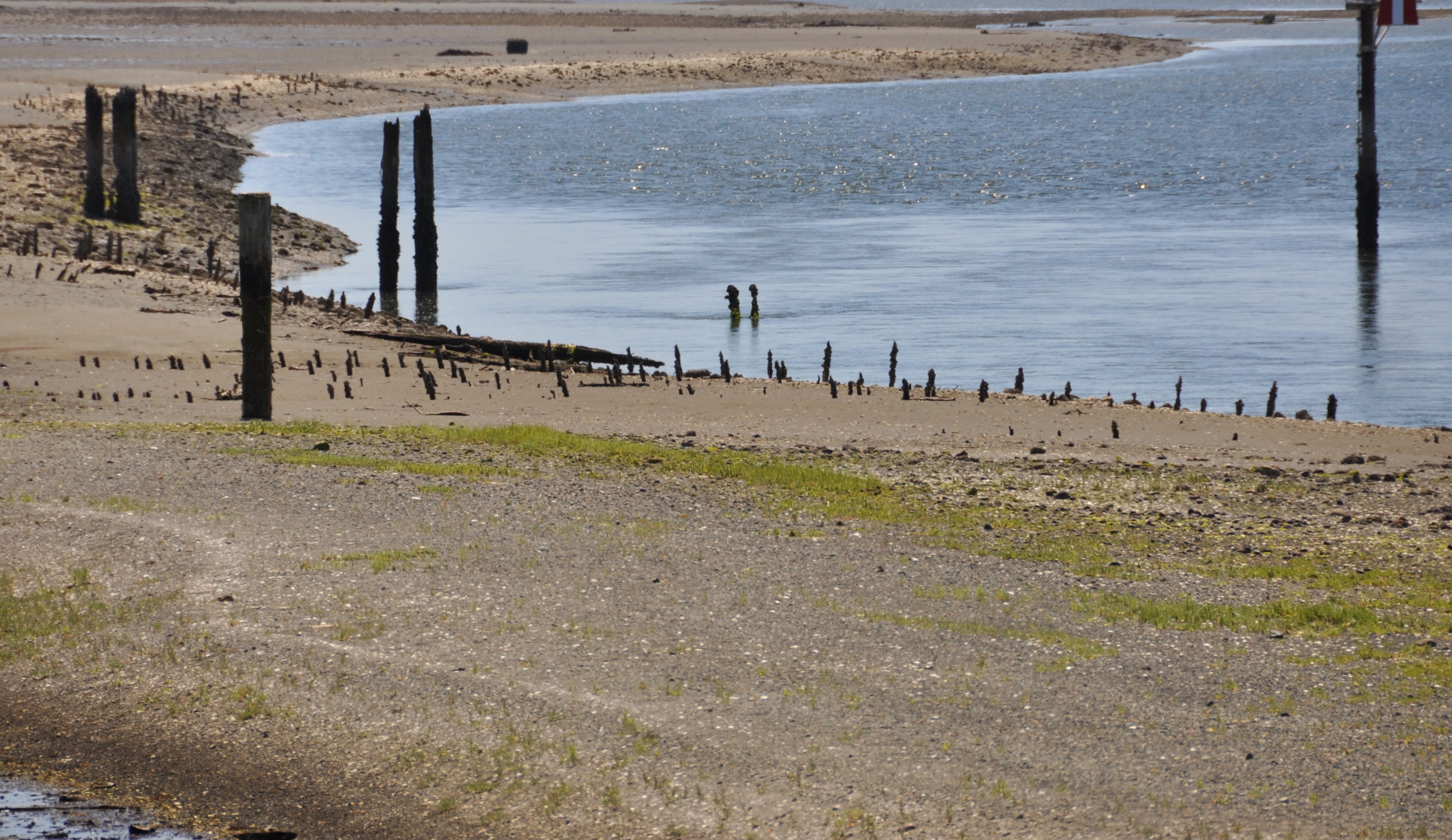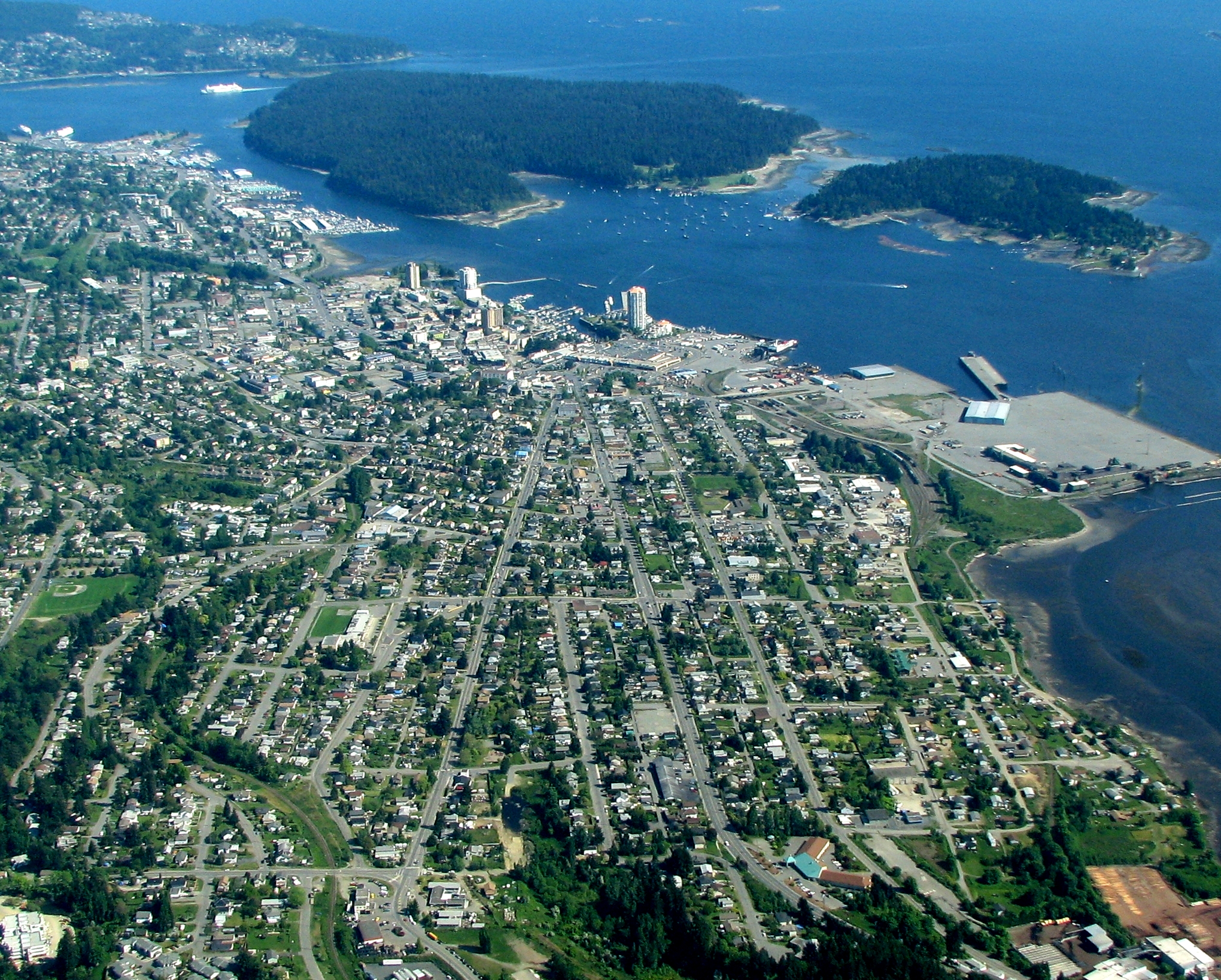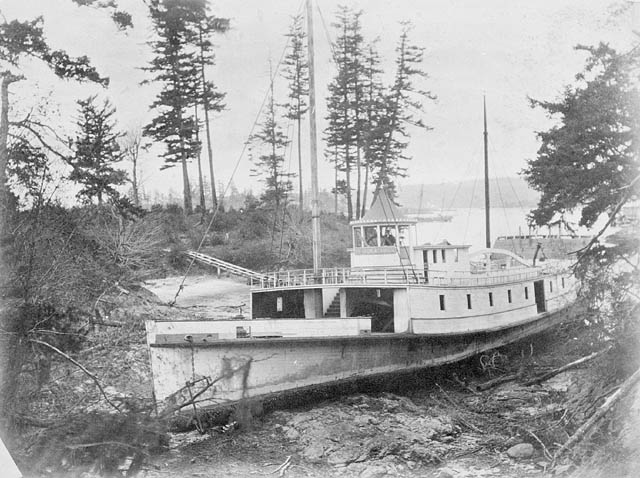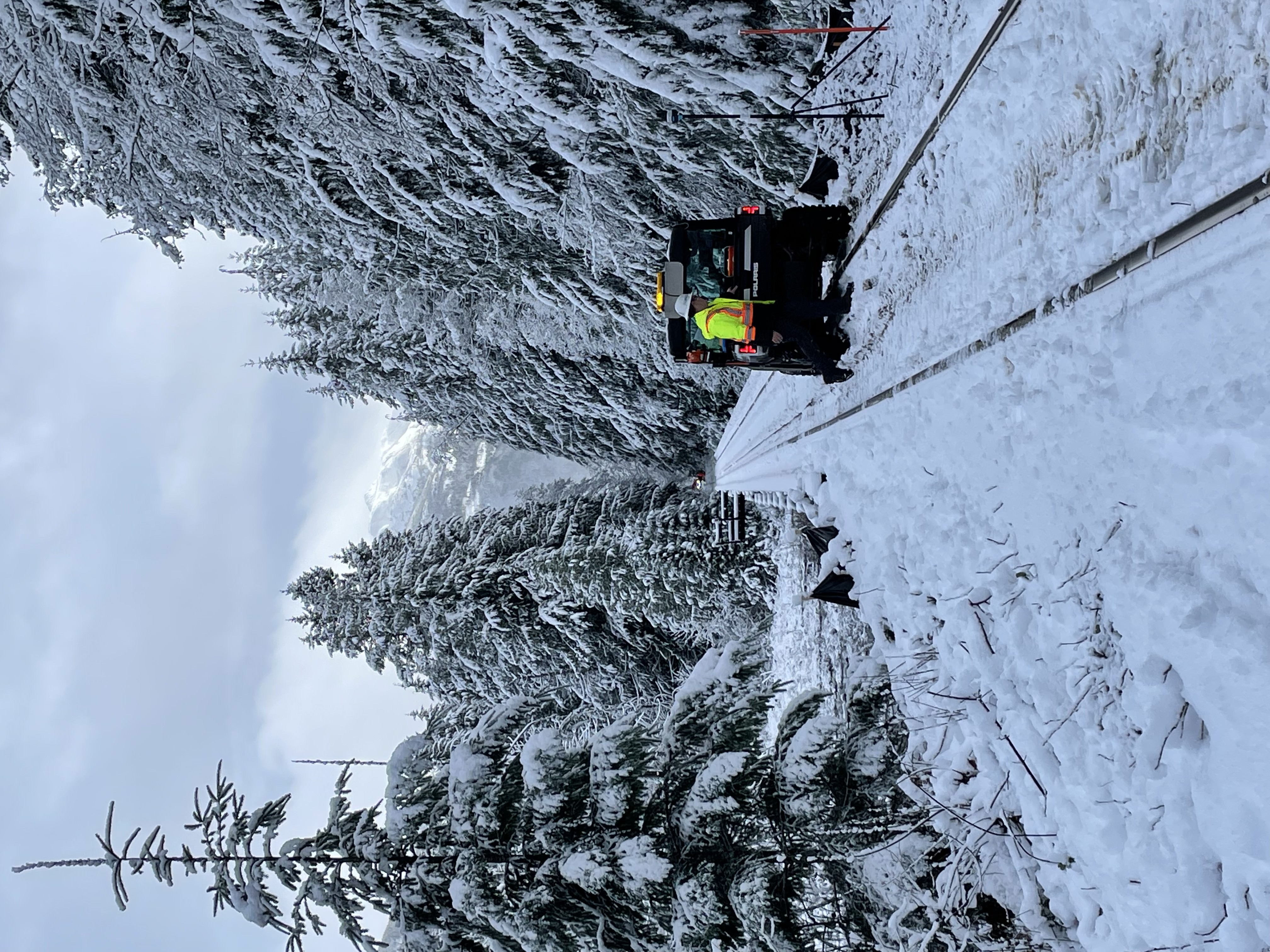|
Robert Dunsmuir
Robert Dunsmuir (August 31, 1825April 12, 1889) was a Scottish-Canadian coal mine developer, owner and operator, railway developer, industrialist and politician in British Columbia. He was recognized as a National Historic Person by the government of Canada in 1971. Origins in Scotland Dunsmuir was born in Hurlford, Scotland, to 20-year-old James Dunsmuir and his wife Elizabeth in 1825. At the time of his birth, his family was engaged in the coal business in his native Ayrshire. Dunsmuir's grandfather, Robert, had leased coal properties and bought out local competitors in the days before the arrival of the railway in the 1840s permitting him to increase prices. In 1832, in the midst of this prosperity, Robert's mother, father, grandmother and two of his three sisters died within days of each other in a cholera epidemic which swept the area. Three years later, grandfather Robert died a relatively wealthy man, leaving a third of his estate in trust for his orphaned grandchildre ... [...More Info...] [...Related Items...] OR: [Wikipedia] [Google] [Baidu] |
Robert Dunsmuir
Robert Dunsmuir (August 31, 1825April 12, 1889) was a Scottish-Canadian coal mine developer, owner and operator, railway developer, industrialist and politician in British Columbia. He was recognized as a National Historic Person by the government of Canada in 1971. Origins in Scotland Dunsmuir was born in Hurlford, Scotland, to 20-year-old James Dunsmuir and his wife Elizabeth in 1825. At the time of his birth, his family was engaged in the coal business in his native Ayrshire. Dunsmuir's grandfather, Robert, had leased coal properties and bought out local competitors in the days before the arrival of the railway in the 1840s permitting him to increase prices. In 1832, in the midst of this prosperity, Robert's mother, father, grandmother and two of his three sisters died within days of each other in a cholera epidemic which swept the area. Three years later, grandfather Robert died a relatively wealthy man, leaving a third of his estate in trust for his orphaned grandchildre ... [...More Info...] [...Related Items...] OR: [Wikipedia] [Google] [Baidu] |
James Dunsmuir
James Dunsmuir (July 8, 1851 – June 6, 1920) was a Canadian industrialist and politician in British Columbia. He served as the 14th premier of British Columbia from 1900 to 1902 and the eighth lieutenant governor of British Columbia from 1906 to 1909. Early life and business career Son of Robert Dunsmuir, he was heir to his family's coal fortune. The Dunsmuir family dominated the province's economy in the late nineteenth century and was a leading force in opposing organized labour. Dunsmuir managed his family's coal business from 1876 until 1910, increasing profits and violently putting down efforts to unionize. In 1905, he sold his Esquimalt and Nanaimo Railway to the Canadian Pacific Railway. In 1910, he sold his coal mining companies, Union Colliery of British Columbia and R. Dunsmuir & Sons, to Canadian Collieries (Dunsmuir) Ltd (CCD). Opposition to organized labour In the 42 years that the Dunsmuirs owned the collieries, they never recognized their employees' attemp ... [...More Info...] [...Related Items...] OR: [Wikipedia] [Google] [Baidu] |
Dunsmuir, British Columbia Railway Station
The Dunsmuir station is located in Dunsmuir, British Columbia. The station was a flag stop on Via Rail's ''Dayliner'' service. The station is on the Southern Railway of Vancouver Island mainline, first appearing in railway maps in 1918. The station is named after Robert Dunsmuir Robert Dunsmuir (August 31, 1825April 12, 1889) was a Scottish-Canadian coal mine developer, owner and operator, railway developer, industrialist and politician in British Columbia. He was recognized as a National Historic Person by the governm ..., one of the early founders of the railway. Service ended in 2011. Footnotes External links Via Rail Station Description {{DEFAULTSORT:Dunsmuir Railway Station Via Rail stations in British Columbia Railway stations in Canada opened in 1918 Railway stations closed in 2011 Disused railway stations in Canada ... [...More Info...] [...Related Items...] OR: [Wikipedia] [Google] [Baidu] |
Courtenay, BC
Courtenay ( ) is a city on the east coast of Vancouver Island, in the Canadian province of British Columbia. It is the largest community and only city in the area commonly known as the Comox Valley, and the seat of the Comox Valley Regional District, which replaced the Comox-Strathcona Regional District. Courtenay is west of the town of Comox, northeast of the village of Cumberland, northwest of the unincorporated settlement of Royston, and northwest of Nanaimo. Along with Nanaimo and Victoria, it is home to The Canadian Scottish Regiment (Princess Mary's), a Primary Reserve infantry regiment of the Canadian Armed Forces. Courtenay and nearby Comox are served by the coast-spanning Island Highway, the Island Rail Corridor, and a local airport in Comox. History Early history Archaeological evidence suggests there was an active Coast Salish fishing settlement on the shores of the Courtenay River Estuary for at least 4,000 years. Due to its gentle climate, fertile soil and ab ... [...More Info...] [...Related Items...] OR: [Wikipedia] [Google] [Baidu] |
Victoria, BC
Victoria is the capital city of the Canadian province of British Columbia, on the southern tip of Vancouver Island off Canada's Pacific coast. The city has a population of 91,867, and the Greater Victoria area has a population of 397,237. The city of Victoria is the 7th most densely populated city in Canada with . Victoria is the southernmost major city in Western Canada and is about southwest from British Columbia's largest city of Vancouver on the mainland. The city is about from Seattle by airplane, seaplane, ferry, or the Victoria Clipper passenger-only ferry, and from Port Angeles, Washington, by ferry across the Strait of Juan de Fuca. Named for Queen Victoria, the city is one of the oldest in the Pacific Northwest, with British settlement beginning in 1843. The city has retained a large number of its historic buildings, in particular its two most famous landmarks, the Parliament Buildings (finished in 1897 and home of the Legislative Assembly of British Columbia ... [...More Info...] [...Related Items...] OR: [Wikipedia] [Google] [Baidu] |
Nanaimo, British Columbia
Nanaimo ( ) is a city on the east coast of Vancouver Island, in British Columbia, Canada. As of the 2021 census, it had a population of 99,863, and it is known as "The Harbour City." The city was previously known as the "Hub City," which was attributed to its original layout design, whose streets radiated from the shoreline like the spokes of a wagon wheel, and to its central location on Vancouver Island. Nanaimo is the headquarters of the Regional District of Nanaimo. Nanaimo is served by the coast-spanning Island Highway, the Island Rail Corridor, the BC Ferries system, and a local airport. History The Indigenous peoples of the area that is now known as Nanaimo are the Snuneymuxw. An anglicised spelling and pronunciation of that word gave the city its current name. The first Europeans known to reach Nanaimo Harbour were members of the 1791 Spanish voyage of Juan Carrasco, under the command of Francisco de Eliza. They gave it the name ''Bocas de Winthuysen'' after nava ... [...More Info...] [...Related Items...] OR: [Wikipedia] [Google] [Baidu] |
Esquimalt, British Columbia
The Township of Esquimalt is a municipality at the southern tip of Vancouver Island, in British Columbia, Canada. It is bordered to the east by the provincial capital, Victoria, to the south by the Strait of Juan de Fuca, to the west by Esquimalt Harbour and Royal Roads, to the northwest by the New Songhees 1A Indian reserve and the town of View Royal, and to the north by a narrow inlet of water called the Gorge, across which is the district municipality of Saanich. It is almost tangential to Esquimalt 1 Indian Reserve near Admirals Road. It is one of the 13 municipalities of Greater Victoria and part of the Capital Regional District. Esquimalt had a population of 17,533 in 2021. It covers . It is home to the Pacific fleet of the Royal Canadian Navy. History The region now known as Esquimalt was settled by First Nations people approximately 4000 years before the arrival of Europeans. The treaties of the Hudson's Bay Company (HBC), signed in 1843, refer to these people as ... [...More Info...] [...Related Items...] OR: [Wikipedia] [Google] [Baidu] |
Esquimalt And Nanaimo Railway
The Island Rail Corridor, previously the Esquimalt & Nanaimo Railway (E&N Railway), is a railway operation on Vancouver Island and is the only remaining railway on Vancouver Island after the closure of the Englewood Railway in November 2017. The Island Corridor Foundation owns the former Esquimalt & Nanaimo Railway corridor. The railway line is in length from Victoria to Courtenay, known as the Victoria Subdivision, with a branch line from Parksville to Port Alberni known as the Port Alberni Subdivision at in length, for a total of mainline track. In 2006, the Island Corridor Foundation acquired the railway's ownership from the Canadian Pacific Railway. Both freight service and the crown corporation VIA Rail passenger service have been suspended due to deferred maintenance on the rail line. History Vancouver Island joining Canada The history of an island railway and a functioning island railway in perpetuity, started with the colony of Vancouver Island joining British ... [...More Info...] [...Related Items...] OR: [Wikipedia] [Google] [Baidu] |
Royal Navy
The Royal Navy (RN) is the United Kingdom's naval warfare force. Although warships were used by English and Scottish kings from the early medieval period, the first major maritime engagements were fought in the Hundred Years' War against France. The modern Royal Navy traces its origins to the early 16th century; the oldest of the UK's armed services, it is consequently known as the Senior Service. From the middle decades of the 17th century, and through the 18th century, the Royal Navy vied with the Dutch Navy and later with the French Navy for maritime supremacy. From the mid 18th century, it was the world's most powerful navy until the Second World War. The Royal Navy played a key part in establishing and defending the British Empire, and four Imperial fortress colonies and a string of imperial bases and coaling stations secured the Royal Navy's ability to assert naval superiority globally. Owing to this historical prominence, it is common, even among non-Britons, to ref ... [...More Info...] [...Related Items...] OR: [Wikipedia] [Google] [Baidu] |
San Francisco
San Francisco (; Spanish language, Spanish for "Francis of Assisi, Saint Francis"), officially the City and County of San Francisco, is the commercial, financial, and cultural center of Northern California. The city proper is the List of California cities by population, fourth most populous in California and List of United States cities by population, 17th most populous in the United States, with 815,201 residents as of 2021. It covers a land area of , at the end of the San Francisco Peninsula, making it the second most densely populated large U.S. city after New York City, and the County statistics of the United States, fifth most densely populated U.S. county, behind only four of the five New York City boroughs. Among the 91 U.S. cities proper with over 250,000 residents, San Francisco was ranked first by per capita income (at $160,749) and sixth by aggregate income as of 2021. Colloquial nicknames for San Francisco include ''SF'', ''San Fran'', ''The '', ''Frisco'', and '' ... [...More Info...] [...Related Items...] OR: [Wikipedia] [Google] [Baidu] |
Colliery
Coal mining is the process of extracting coal from the ground. Coal is valued for its energy content and since the 1880s has been widely used to generate electricity. Steel and cement industries use coal as a fuel for extraction of iron from iron ore and for cement production. In the United Kingdom and South Africa, a coal mine and its structures are a colliery, a coal mine is called a 'pit', and the above-ground structures are a 'pit head'. In Australia, "colliery" generally refers to an underground coal mine. Coal mining has had many developments in recent years, from the early days of men tunneling, digging and manually extracting the coal on carts to large open-cut and longwall mines. Mining at this scale requires the use of draglines, trucks, conveyors, hydraulic jacks and shearers. The coal mining industry has a long history of significant negative environmental impacts on local ecosystems, health impacts on local communities and workers, and contributes heavily to th ... [...More Info...] [...Related Items...] OR: [Wikipedia] [Google] [Baidu] |
Arthur Farquhar
Admiral Sir Arthur Farquhar (9 January 1815 – 29 January 1908) was a British Royal Navy officer who went on to be Commander-in-Chief, Plymouth. Naval career Farquhar joined the Royal Navy in 1829. He took part in the bombardment of Acre during the Oriental Crisis in 1840. Promoted to commander in 1844, Farquhar was given command of HMS ''Albatross'' in 1846 and fought pirates in Borneo in 1849. Promoted to captain in 1849, he commanded HMS ''Malacca'', HMS ''Victory'', HMS ''Hannibal'', HMS ''Hogue'' and HMS ''Lion''. Farquhar was appointed Commander-in-Chief, Pacific Station in 1869 and Commander-in-Chief, Plymouth in 1878. He retired in 1880. There is a memorial to Farquhar in Christ Church, Kincardine O'Neil. Family In 1851 Farquhar married Ellen Rickman; the couple had nine sons and four daughters. He was an investor in the coal mines of Robert Dunsmuir Robert Dunsmuir (August 31, 1825April 12, 1889) was a Scottish-Canadian coal mine developer, owner a ... [...More Info...] [...Related Items...] OR: [Wikipedia] [Google] [Baidu] |



_VICTORIA_FROM_JAMES'_BAY_LOOKING_UP_GOVERNMENT_STREET.jpg)




